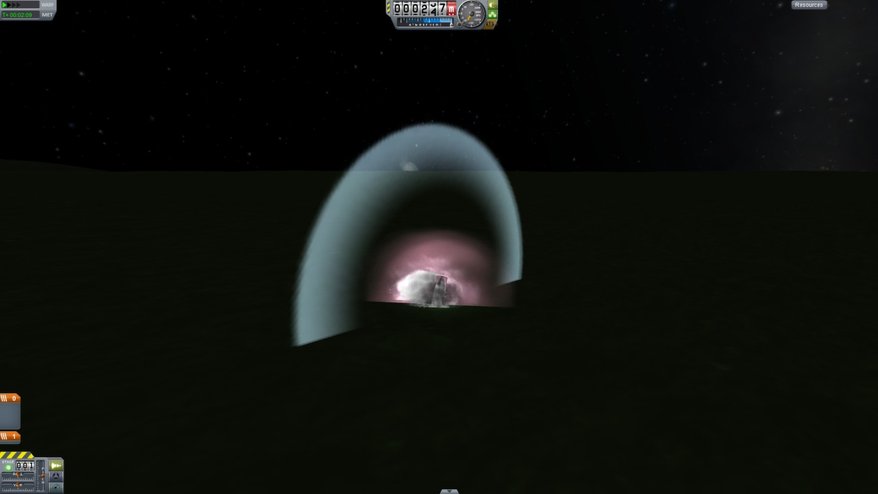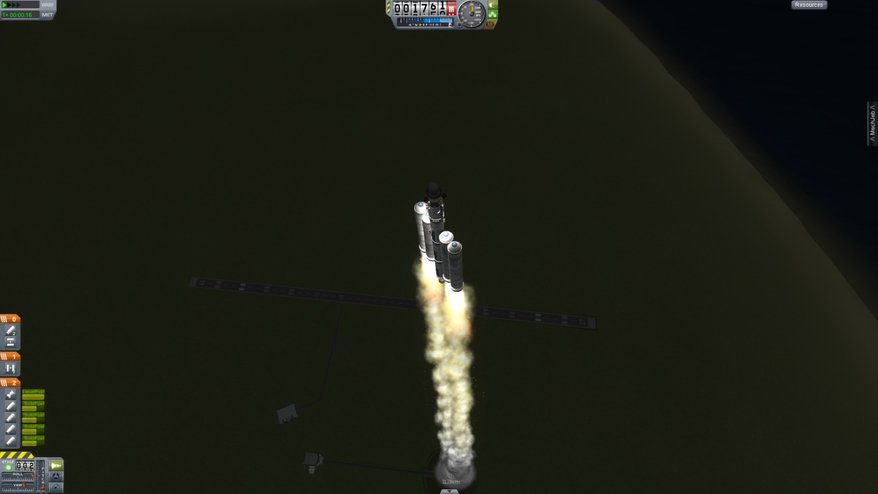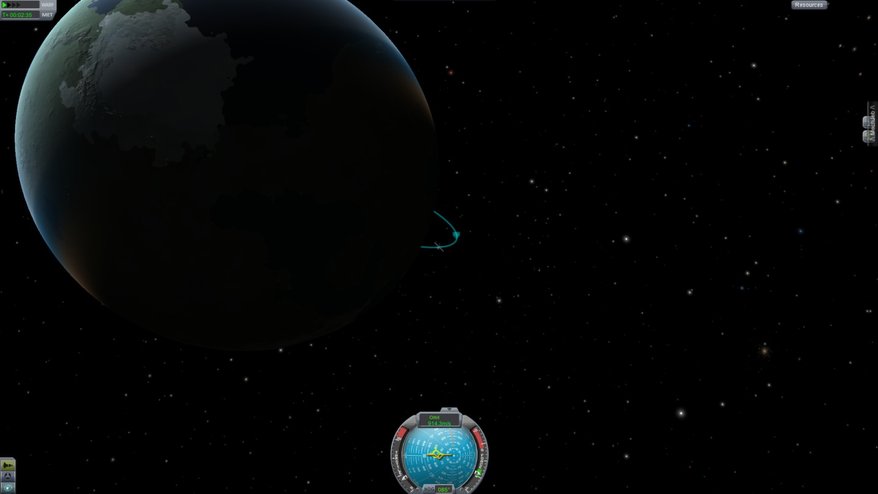Kerbal Space Program chronicle — part one: achieving orbit for science

Oh, son of a Kerbal. When I added those clamps, I forgot to address their staging. When the big moment arrives, the clamps release before the engines light. The ship drops its entire weight onto the single engine, which snaps off. Like a revolver dropped down a stairwell, the booster rockets ignite on their own and drag the crippled craft 8,000 meters into the air before the whole mess comes crashing down with a bonus explosion.
Sorry I judged you, NASA. I take it all back.

I sweep all the twisted steel and broken glass off the launchpad, reload the thankfully unmanned ship and try again. This time: sweet success.
My pilots are the best in the world, and they tell me that the rocket should stay perfectly straight up and down for at least the first 10 kilometers. Kerbin's atmosphere is thickest at the ground level and thinner at higher altitudes, so staying upright gets me through the thickest part of the atmosphere with the least amount of drag. After that, I slowly start a gravity turn.
An overeager intern starts to panic, thinking that PCG 1 is about to tip over and explode high above the planet. I calm him down and explain: a gravity turn is where I begin to turn toward a 45 degree tilt to fight less gravity while still gaining altitude. It's counterintuitive, but look at it this way: If you were climbing a really steep hill with a heavy load on your back, would you just point straight up the hill and start walking? No, the easiest way is to zig-zag or spiral around the hill on your way to the top. It takes longer, but your legs will thank you.
Kerbin's gravity well works on the same principle. It's got really steep sides, but nobody's forcing you to climb straight out.

The rush of wind dies down, stars brighten and the quiet isolation of space begins. PCG 1 is in space, but it's not in a safe orbit just yet. I locate my instruments and orient myself with a little orbital geography. Orbits are complex creatures, but for the amateur rocket pilot the important part is the two main landmarks: the apo apsis and the peri apsis. They are the highest and lowest points of an orbit, respectively. A solid orbit is anything above 100 kilometers. Kerbin's atmosphere ends at about 70 kilometers, so 100 kilometers will give me some space (ha!) to breathe (ha ha!).
Keep up to date with the most important stories and the best deals, as picked by the PC Gamer team.

